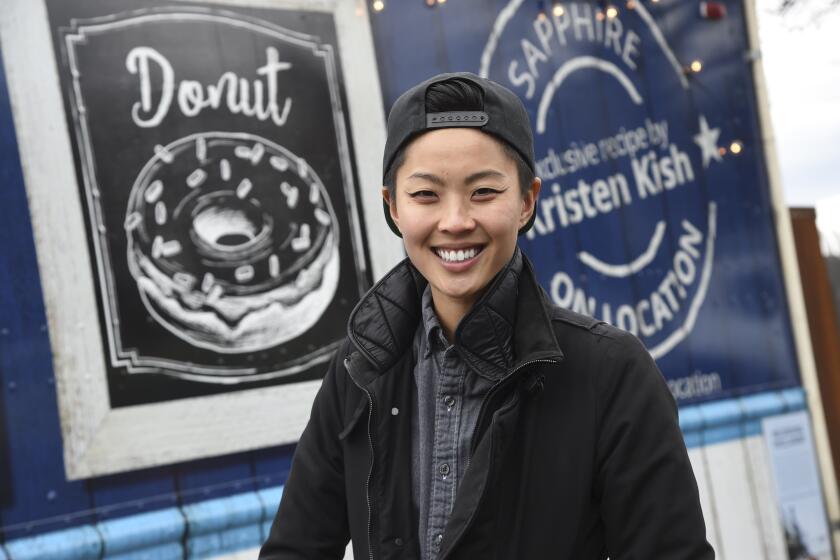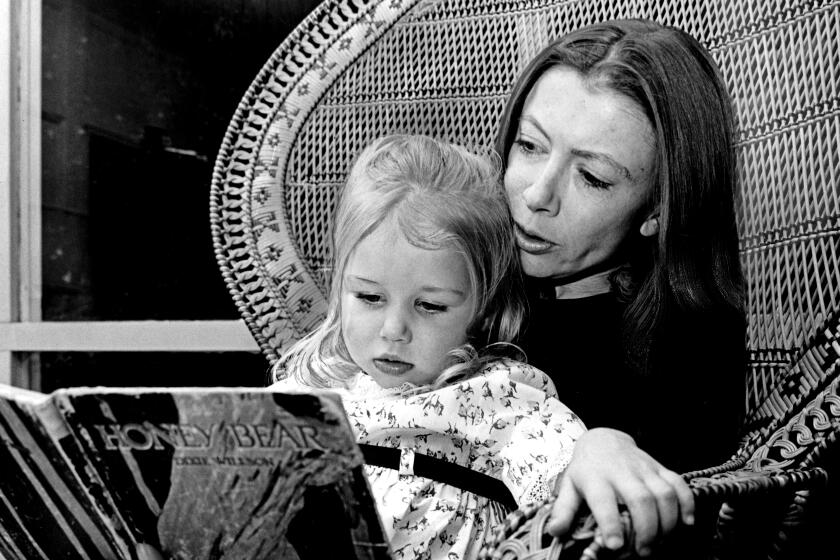Behind the ‘60s Scene : MAKING PEACE<i> By Marylouise Oates (Warner Books: $19.95; 336 pp.) </i>
- Share via
Abbie Hoffman, who had reason to know, used to say that you’re not paranoid if they’re actually out to get you.
Such is the theme of Marylouise Oates’ first novel, “Making Peace,” which follows a group of young activists through the week preceding a Vietnam War protest in Washington, D.C., in 1967. Oates raises disturbing, if not exactly brand-new, questions about the inner workings of the peace movement of the late ‘60s.
The organizers of the fictional Offensive Against the War share a history: their experiences in the civil rights movement, registering voters during the Mississippi Summer. Mississippi is not that far behind these young people; Martin Luther King and Bobby Kennedy are alive and the assassination of John Kennedy is still a fairly fresh national wound. No major figure has yet risen in the Democratic Party to challenge either Lyndon Johnson or the Vietnam War.
“Making Peace” is really an ensemble story, framed by a current-day dilemma at a Democratic National Convention. The central corps of characters includes most of the types one might expect to find at a major ‘60s political event:
Annie O’Connor, chain-smoking graduate of Manhattanville (“the Catholic girls’ college the Kennedy sisters went to”), drifted south with vague ideas about teaching and stumbled into a calling handling press relations. Now she’s playing cat-and-mouse with insistent big-time reporters who want the speaker list for the Offensive.
Tom Burnett, the smooth Yale preppie and natural leader who rises effortlessly to the top of whatever groups he happens to be working with, is as much the head of the Offensive as anyone on the nominally egalitarian steering committee. His current goal is to get a congressman to be the first Democrat to break with L.B.J. and speak out against the war at an Offensive conference.
Ed Kapinski, son of a Skokie Communist and a veteran organizer, is working on the program too. Because most of the nation’s black leaders are headed to Chicago for a competing conference, the Offensive needs to hustle some dark faces for the podium. One of Kapinski’s tasks is to persuade his sometime girlfriend, Bitsy Clark, to be a speaker.
Bitsy, a black upper-middle-class Radcliffe grad, now runs a successful educational program in the Philadelphia ghetto and is about to expose the Rev. Paul Tyler, another Mississippi Summer veteran. Tyler, a charismatic speaker noted for being front-and-center at any civil rights photo opportunity, owns rat-infested slum housing and badly abuses his rich (and remarkably stupid), young Italian wife. She, in turn, sneaks out to collate and staple for the Offensive and takes up with a draft resister preparing to make a public stand.
Joe Pisano, who reported extensively on the civil rights movement across the South and consequently knows the Mississippi Summer alumni well, now is covering the Offensive for the No. 2 paper in Washington. He’s sweet on Annie, though their developing relationship must be kept secret because she is a source.
Quite a few of these people have secrets, as a matter of fact, some of them rather nasty. This includes the congressman wavering on whether to publicly oppose the war. Various compromising photographs are floating around, and there are subplots galore. Hidden agendas abound.
If all this sounds a bit confusing, it is, and Oates doesn’t help matters by continually switching viewpoints among her many characters as the story unfolds chronologically. The later introduction of other characters, who might be considered the story’s Sinister Forces, fragments the tale even further.
But if the story line is complicated and a bit predictable, it is nonetheless compelling. Oates knows her territory well, from stints as deputy press director for the Vietnam Moratorium and deputy national press secretary at McCarthy for President. The behind-the-scenes chaos and maneuvering ring true, as the Offensive tries simultaneously to appear universal and distance itself from various lunatic fringes. At one point, for instance, Annie’s press office is taken over by Hare Krishnas.
Oates’ take on Congress is right on target, too, with a clear understanding of the sort of machinations that never make it into civics textbooks. Indeed, one of the book’s most enjoyable characters is an old-style Irish pol named Kelly, the quintessential career congressional aide.
Any novel of the ‘60s that arrives with advance praise from such disparate folk as Ted Kennedy, Bill Buckley, Elizabeth Drew, Hunter Thompson and Judith Krantz is bound to be a trifle schizophrenic. Still, “Making Peace” is a significant addition to the scanty shelf of fiction on this era. There are plenty of fascinating stories yet to be told, about a time that continues to make many people--including a lot of its more active participants--extremely uncomfortable.
“Making Peace” is one such story, communicating the political energy of the peace movement as effectively as it chronicles its foibles.
More to Read
Sign up for our Book Club newsletter
Get the latest news, events and more from the Los Angeles Times Book Club, and help us get L.A. reading and talking.
You may occasionally receive promotional content from the Los Angeles Times.










